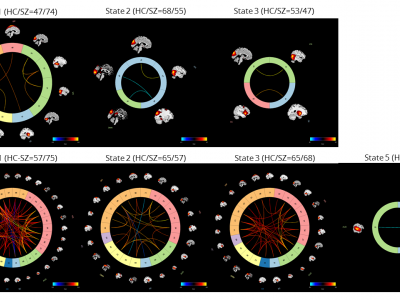Documents
Poster
Identifying fMRI Dynamic Connectivity States Using Affinity Propagation Clustering Method: Application to Schizophrenia

- Citation Author(s):
- Submitted by:
- Mustafa Salman
- Last updated:
- 10 March 2017 - 9:19pm
- Document Type:
- Poster
- Document Year:
- 2017
- Event:
- Presenters:
- Mustafa S Salman
- Paper Code:
- BISP-P1.5
- Categories:
- Log in to post comments
Numerous studies have shown that brain functional connectivity patterns can be time-varying over periods of tens of seconds. It is important to capture inherent non-stationary connectivity states for a better understanding of the influence of disease on brain connectivity. K-means has been widely used to extract the connectivity states from dynamic functional connectivity. However, K-means is dependent on initialization and can be exponentially slow in converging due to extensive noise in dynamic functional connectivity. In this work, we propose to use an affinity propagation clustering method to estimate the connectivity states. By applying K-means and the new method separately, we analyzed dynamic functional connectivity of 82 healthy controls and 82 schizophrenia patients, and then explored group differences between schizophrenia patients and healthy controls in the identified connectivity states. Both methods revealed that group differences mainly lay in visual, sensorimotor and frontal cortices. However, the new approach found more meaningful group differences than K-means. Our finding supports that our method is promising in exploring biomarkers of mental disorders.

